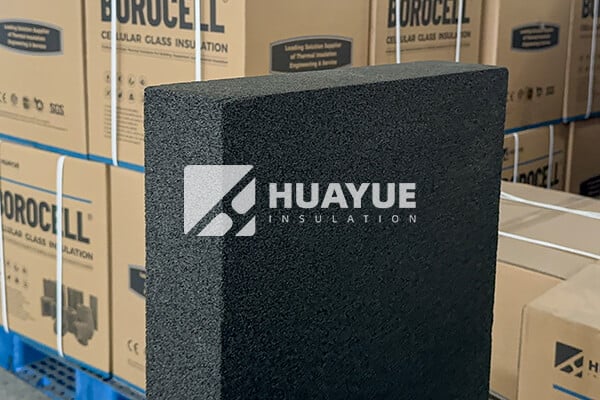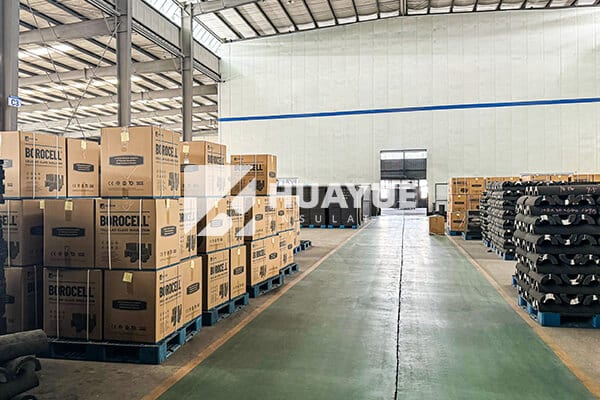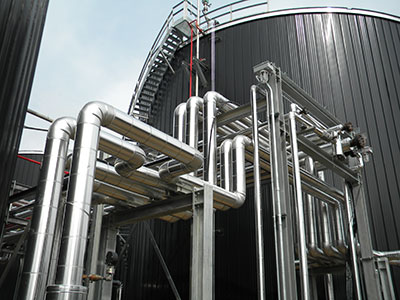When you are responsible for a building’s energy use, even small gaps in insulation add up to big costs. Choosing the right roof insulation can solve hidden, expensive problems fast.
Cellular glass roof insulation is a top choice for both commercial and industrial buildings thanks to its unique blend of fire resistance, moisture proofing, and durability. It prevents energy loss, reduces condensation, and outlasts many alternatives—making it valuable for harsh environments and long-term savings.

Many people overlook the roof when considering energy-saving upgrades. But it is one of the biggest sources of heat loss and moisture intrusion. I have seen buildings where poor roof insulation led to spiraling maintenance costs, structural damage, and even regulatory fines. Choosing the right material now shields you from these recurring headaches. Let’s break down why cellular glass may be the solution you’ve been looking for.
What is the best insulation for a cold roof?
Every winter, energy losses and condensation issues spike in buildings with inadequate roof insulation. This costs money and sometimes damages your roof structure.
The best insulation for a cold roof is cellular glass, because it doesn’t absorb moisture, is not affected by frost, and stops condensation—especially in climates where freeze-thaw cycles occur.

When I first tried cellular glass on a cold storage roof, I noticed a key difference right away. Other materials had wet spots and even mold after a season, but cellular glass boards stayed dry and unaffected. For example, cellular glass stops water completely while many other materials take in a little water over time. Cellular glass never burns, so there is no fire risk with it. Most mineral wools do fairly well, but they do not match the total water and fire resistance that cellular glass offers. Plastic foam materials can insulate well, but if they get wet or age, the effect drops. When I installed cellular glass, roof leaks and winter drips stopped. My cold roof projects stayed dry and damage-free all season.
Is FOAM GLASS the same as cellular glass?
When talking to suppliers, some call it foam glass while others call it cellular glass. This creates confusion and can lead to costly mistakes in specification or procurement.
Yes—foam glass and cellular glass mean the same thing. Both refer to rigid insulation made by sintering crushed glass with a foaming agent, creating a closed-cell structure.

I remember ordering material from a new provider who insisted they only had foam glass, not cellular glass. The truth is, different markets use different names, but it’s always the same product. If you see something called foam glass in the U.S. or cellular glass in Germany, it comes from the same process. Both are made from glass melted with a foaming agent that forms a network of airtight, tiny glass bubbles. This structure means water cannot get in, gas stays out, and the block is both hard and light. Whether my paperwork says foam glass or cellular glass, I always look for “closed cells” and a label that it is 100% glass. Once I see this, I know I am buying the right insulation.
Is cellular glass insulation hot or cold?
Installing the wrong insulation can cause overheating or allow too much heat to escape. Many people think that cellular glass is only for either hot or cold—but what is the truth?
Cellular glass is suitable for both hot and cold applications. It insulates against heat loss in cold conditions and blocks heat gain in hot climates, due to its closed-cell, temperature-stable structure.
I’ve used cellular glass in the walls and roofs of cold storage buildings, keeping the inside freezing even when the sun beats down. At the same time, I have worked on pipelines and tanks that held hot liquids, some over 200°C, using the same cellular glass boards to keep the heat in. No matter if it is the cold of winter or the high heat of midsummer, I have not seen these boards crack, sag, or change how they work. Cellular glass stops condensation at cold surfaces because it keeps warmth out and blocks water vapor. The same structure stops heat from entering a cool building or rising up through a hot roof. No matter if your project faces cold, heat, or both, cellular glass works across the full temperature range.
What is the R-value of cellular glass insulation?
Calculating how much insulation you need means knowing the thermal resistance, or R-value. People get confused because different sources give different numbers for cellular glass.
The R-value of cellular glass insulation is about 3.1 to 3.4 per inch (RSI 0.54 to 0.60 per 25mm), and does not degrade with age, water, or temperature changes.
I have checked the numbers myself in real building projects through the years. Other insulations sometimes lose their strength when they get damp, when they compress, or as the years go on. I have pulled out old cellular glass from a project after many years, and the boards are as firm as the day they were installed. They also have the same R-value I first measured. The R-value of cellular glass puts it on par with mineral wool and most foams, but the main difference is that its performance does not go down as time passes. In practice, this means you do not have to add in extra safety margins or worry about the true thermal protection you’re getting. You just specify the R-value and trust it will last.
Conclusion
Cellular glass roof insulation brings long-term reliability, top fire and water resistance, and solid thermal protection to your project, making it a smart investment for any demanding building envelope.

